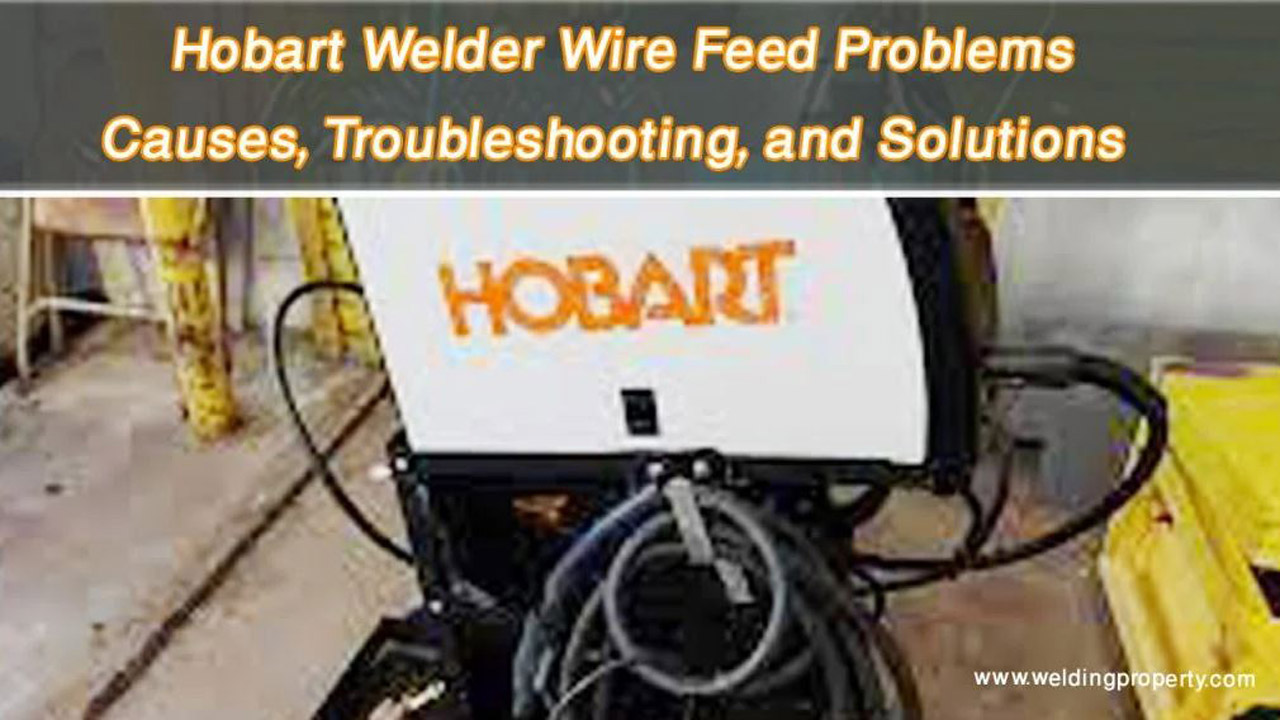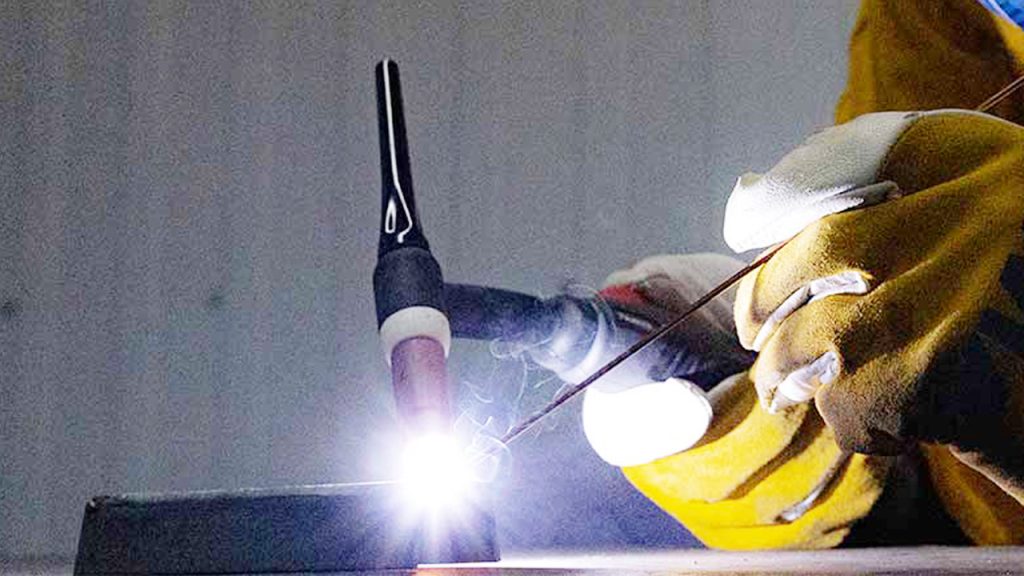If you’ve spent time welding with a Hobart welder, you know how reliable these machines are for various projects. But like any piece of equipment, even the best welders can encounter issues. One of the most common frustrations I’ve experienced is wire feed problems.
When the wire doesn’t feed smoothly, it disrupts your work, creates uneven welds, and can even waste valuable time and materials.
I’ll walk you through everything I’ve learned about identifying, troubleshooting, and fixing wire feed problems with a Hobart welder. If you’re a seasoned welder or just starting out, this information will help you handle these hiccups like a pro.

Wire Feed Problems in Hobart Welders
Let’s start with the basics. Wire feed problems occur when the welding wire doesn’t move through the welder as it should. This can result in inconsistent arc performance, sputtering, or even a total stop in wire feeding.
The most common symptoms include:
- Irregular or jerky wire feeding.
- The wire getting stuck in the liner.
- A sudden halt in wire movement.
- The wire burning back or bunching up at the spool.
If any of these sound familiar, don’t worry—you’re not alone. Wire feed issues are common and often easy to fix once you understand the root cause.
Causes of Wire Feed Problems
Wire feed issues can stem from several factors, ranging from improper setup to worn-out components. Let’s break down the most likely culprits:
Tension Issues in the Drive Rollers
The drive rollers are responsible for feeding the wire through the liner. If the tension is too loose, the wire won’t move smoothly. On the other hand, excessive tension can deform the wire.
Clogged or Damaged Liner
The liner guides the wire from the spool to the gun. Over time, dirt, debris, or worn-out liners can obstruct the wire’s path, causing feeding issues.
Worn or Incorrect Drive Rollers
Hobart welders come with specific drive rollers suited for different wire sizes. Using the wrong type or a worn-out roller can lead to slipping or inconsistent feeding.
Spool Tension Problems
If the spool tension is too tight, the wire may struggle to unwind. Conversely, a loose spool can cause tangling, leading to feed interruptions.
Poor Electrical Contact
If the contact tip of the welding gun is worn, damaged, or clogged, it can interfere with wire feeding and create an unstable arc.
Wrong Wire Type or Size
Using wire that’s not compatible with your machine can also result in feeding issues. Always double-check the specifications of your Hobart welder.
Troubleshooting Hobart Welder Wire Feed Problems
When I encounter wire feed issues, my first step is always troubleshooting. It’s a systematic process that helps pinpoint the exact problem. Here’s what I recommend:
Inspect the Wire Spool
Start by checking the wire spool for tangles, rust, or debris. A clean, properly wound spool is essential for smooth feeding. Ensure the spool tension is set correctly—not too tight and not too loose.
Check the Drive Rollers
Open the wire feed mechanism and inspect the drive rollers for wear or damage. Make sure you’re using the right size roller for your wire. Adjust the tension until the wire feeds smoothly without slipping.
Examine the Liner
Disconnect the liner and blow out any dirt or debris using compressed air. If the liner is bent, kinked, or excessively worn, replace it with a new one.
Inspect the Contact Tip
Remove the contact tip and look for signs of clogging or wear. If it’s damaged, replace it immediately to restore proper wire feeding.
Test the Wire Feed Speed
Set the wire feed speed according to the material and welding process. If the speed is too high or too low, it can cause feeding issues. Adjust it gradually until the wire feeds consistently.
Verify Electrical Connections
Check all electrical connections, especially the ground clamp and welding gun. Loose or faulty connections can disrupt the wire feed mechanism.
Solutions to Fix Wire Feed Problems
Once you’ve identified the cause, it’s time to fix the problem. Here are practical solutions that have worked for me:
Replace Worn Components
If the drive rollers, liner, or contact tip are worn, don’t hesitate to replace them. Using worn-out parts will only lead to more problems down the line.
Use High-Quality Wire
Cheap or substandard wire can lead to tangling, rusting, and poor feeding. Invest in high-quality welding wire that’s compatible with your Hobart welder.
Adjust the Tension Properly
Take the time to adjust both the spool tension and drive roller tension. A good rule of thumb is to tighten them just enough to feed the wire smoothly without slipping or distorting.
Clean and Maintain the Machine
Regular maintenance is key to preventing wire feed problems. Clean the wire feed mechanism, liner, and gun regularly to keep dirt and debris from causing issues.
Upgrade the Liner
If you’re welding for extended periods or working with specialty wires, consider upgrading to a higher-quality liner designed for smoother feeding.
Preventing Wire Feed Problems
Prevention is always better than repair. Here’s how you can avoid wire feed problems in the future:
- Regular Maintenance: Clean and inspect your Hobart welder after every use.
- Proper Storage: Store wire spools in a dry, clean environment to prevent rust and contamination.
- Check Settings: Always set the correct wire feed speed, voltage, and tension before starting a job.
- Use Compatible Parts: Stick to Hobart-approved parts and accessories for optimal performance.
Why Choose a Hobart Welder?
Hobart welders are known for their durability, performance, and user-friendly design. However, like any equipment, they require proper care and maintenance to perform at their best. Addressing wire feed problems quickly ensures that you can continue creating strong, clean welds without interruptions.
Conclusion
Wire feed problems can be frustrating, but they’re usually easy to fix once you know what to look for. Whether it’s a simple tension adjustment or replacing a worn-out liner, tackling these issues head-on will save you time and effort in the long run.
As someone who’s spent countless hours welding, I’ve learned that regular maintenance and attention to detail make all the difference. With a little patience and the right approach, your Hobart welder will run like a dream, and your projects will turn out just the way you envisioned.
FAQs
Why is my Hobart welder wire feeding unevenly?
Uneven wire feeding is often caused by incorrect drive roller tension, a clogged liner, or a worn-out contact tip. Check and adjust these components for smoother feeding.
How do I clean a welding liner?
Disconnect the liner and blow it out with compressed air to remove dirt and debris. If the liner is bent or damaged, replace it.
What type of wire works best with a Hobart welder?
Use high-quality welding wire that matches your machine’s specifications. For example, ER70S-6 is a common choice for MIG welding.
Can I prevent wire feed problems entirely?
While no machine is immune to occasional issues, regular maintenance and proper setup can significantly reduce the likelihood of wire feed problems.
When should I replace my Hobart welder’s drive rollers?
Replace the drive rollers when you notice visible wear, slipping, or difficulty feeding the wire smoothly.

Endow Russel the owner chief editor of giftendow.com . I am a mechanical engineer and assign to an local firm with much experience in welding and industrial equipment.

